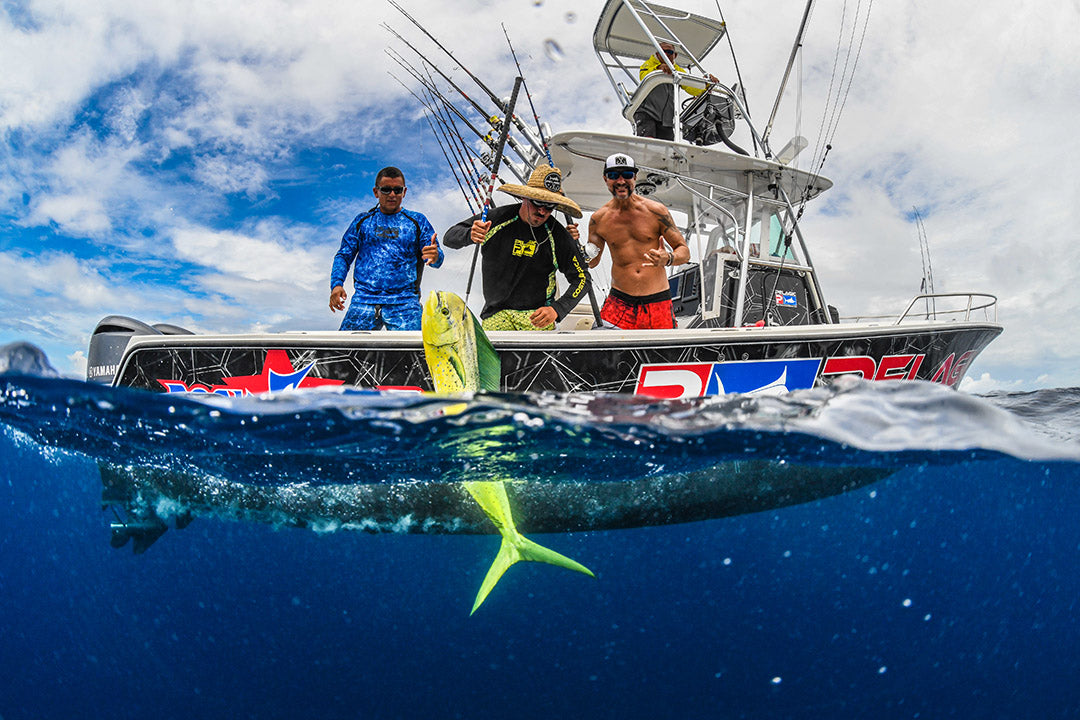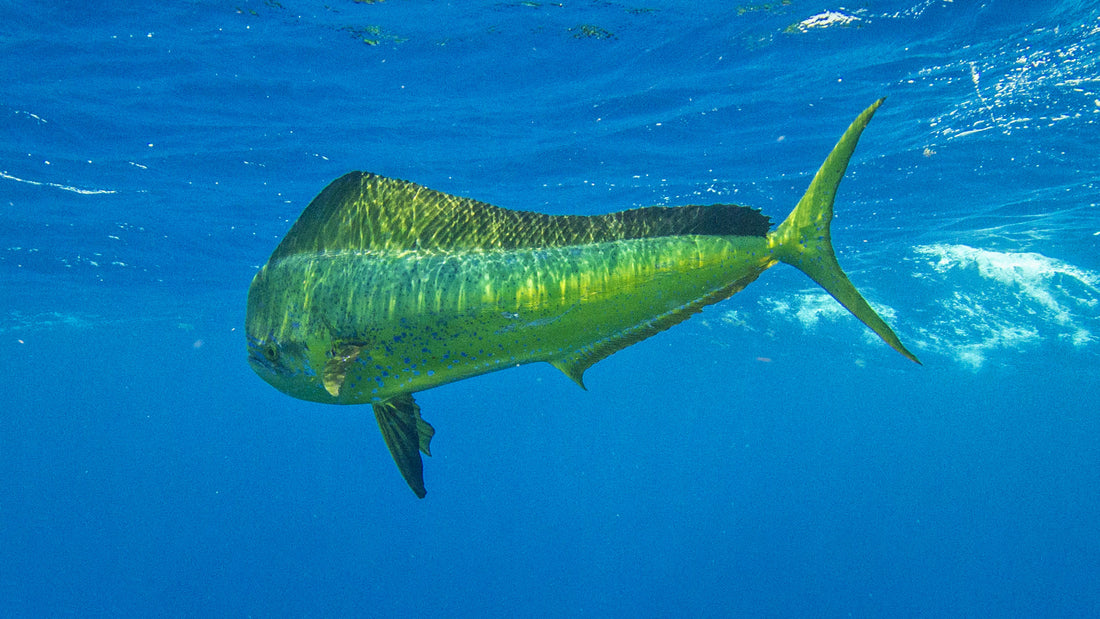
Mahi-Mahi: the fish so nice, they named it twice. Scientific name, Coryphaena hippurus, also known as dolphinfish or dorado; the Mahi-Mahi is one of the most sought-after fish in the sea by fisherman because they are downright beautiful, valiantly strong fighters, and they put on a show of aerial acrobatics when hooked. Mahi-Mahi also present amazing color patterns and variations while offering incredible table fare, added reasons why they are arguably one of the most highly regarded pelagic species in our oceans. Regardless of what you call them, the Mahi is truly a fan favorite and we wanted to share a little more information about this amazing creature.
Often putting on a supreme aerial display when hooked, mahi-mahi are sure to stun with amazing acrobatic performances. [Adrian Gray]
Mahi-Mahi are easy to identify because of their bright color patterns and unique body shape. They are usually a vibrant green color with yellow and blue highlights, but also alternate their colors to lighter shades of blues and even metallic silver. They have special color changing cells called chromatophores, which are three-dimensional, pigment containing, light reflecting cells, which gives them the ability to flicker their colors. These chromatophores are connected to the fish’s nervous system, which prompts them to change colors when excited, and also the reason why their color fades when they pass away.
Brilliant color variations from vibrant greens & yellows, to cool blues & silvers make the mahi-mahi a true fan favorite.

The Mahi-Mahi has a long slender body that tapers into a blunt head, but the shape of the head varies in males versus females. Male Mahi-Mahi (often referred to as “bulls”) have a much more pronounced flat, almost 90° forehead, whereas female “cows” have more of a rounded, tapered head. They are one of the fastest growing fish in the sea, reaching a length of up to four feet in the first year of life and upwards of six feet within four years. They reach sexual maturity at four to five months of age while reproducing two to three times a year with females laying 800,000-1,000,000 eggs during each cycle. The average Mahi lives two to three years, with some fish aging past the five-year mark. The International Game Fish Association lists the current All-Tackle World Record Mahi-Mahi as caught in 1976 off the coast of Costa Rica weighing-in at an astounding 87-lbs. 0-oz.
Notice the distinct difference of the female "cow" mahi's rounded/tapered forehead (top), versus the sharp, 90° profile of the "bull" male's blunt facial profile.

Mahi-Mahi live in tropical and subtropical regions of the Atlantic, Pacific, and Indian Oceans. They predominantly live in open oceans following currents and preferred temperature breaks, and will often associate with floating objects such as sargassum weed, kelp, trash debris, and FAD’s, which all attract other forms of life that the Mahi will feed on. Mahi primarily feed during the daytime, with some of their prey being small fin bait, cephalopods, and crustaceans.
Finding that floating offshore pot 'o gold can produce some serious catches of many pelagic species, including today's subject - the Mahi Mahi. [Steve Dougherty | Adrian Gray]

View our full collection of high-performance fishing apparel & accessory products dedicated to the brilliant Mahi-Mahi.
Back to stories
